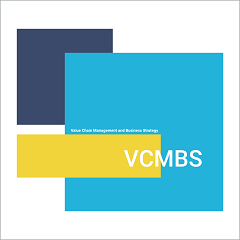THE INFLUENCE OF MARKETING MIX FACTORS TO WINE DISTRIBUTION CHANNELS IN BEIJING, CHINA
Keywords:
Service Marketing Mix, Decision to Buy, Wine Distribution ChannelsAbstract
In this study research the influence of marketing mix factors to wine distribution channels in Beijing, China. The population in Beijing, China with a total of 385 samples. Use questionnaires as a tool to collect data. The data were analyzed by frequency, percentage, mean and standard deviation. A hypothesis was tested with the Enter method of multiple regression analysis using purposive sampling and descriptive statistical analysis consisting of frequency, percentage, mean, and standard deviation. The level of statistical significance was set at the 0.05 level.
The results found that the marketing mix analysis concludes that respondents have a high level of overall opinion. Based on the average, respondents had the most opinions on place, followed by product and least price and the decision to buy wine in distribution channels in China concluded that respondents market mix factors such as Product, Place, Promotion, and Physical Evidence affect the overall wine purchasing decision. Statistically significant at .001, which has a forecast power of 47.7%. This study provides useful information for future instructional research on marketing mix factors to wine distribution channels.
References
Chai, L. T., & Yat, D. N. C. (2019). Online food delivery services: Making food delivery the new normal. Journal of Marketing advances and Practices, 1(1), 62-77.
Cochran, W.G. (1977). Sampling Techniques (3rd ed.). New York: John Wiley & Sons.
Credit Suisse Research Institute. (2020). Global wealth report 2020. Credit Suisse. https://www.credit-suisse.com/about-us/en/reports-research/global-wealth-report.html
Farquhar, J., & Meidan, A. (2017). Marketing financial services. Bloomsbury Publishing.
Fernandes, A. A. R. (2018). The mediation effect of customer satisfaction in the relationship between service quality, service orientation, and marketing mix strategy to customer loyalty. Journal of Management Development, 37(1), 76-87.
Fountain, J., Charters, S., & Cogan-Marie, L. (2021). The real Burgundy: negotiating wine tourism, relational place and the global countryside. Tourism Geographies, 23(5-6), 1116-1136.
George, D., & Mallery, P. (2016). SPSS for Windows Step by Step: A Simple Guide and Reference (13th ed.). Pearson.
Govender, J. P., & Govender, T. L. (2016). The influence of green marketing on consumer purchase behavior. Environmental Economics, 7(2), 77-85.
Hanaysha, J. R., Al Shaikh, M. E., & Alzoubi, H. M. (2021). Importance of marketing mix elements in determining consumer purchase decision in the retail market. International Journal of Service Science, Management, Engineering, and Technology, 12(6), 56-72.
Hanssens, D. M., & Pauwels, K. H. (2016). Demonstrating the value of marketing. Journal of marketing, 80(6), 173-190.
Huang, Y. C., Backman, K. F., Backman, S. J., & Chang, L. L. (2016). Exploring the implications of virtual reality technology in tourism marketing: An integrated research framework. International Journal of Tourism Research, 18(2), 116-128.
Jamali, H. R., Steel, C. C., & Mohammadi, E. (2020). Wine research and its relationship with wine production: a scientometric analysis of global trends. Australian journal of grape and wine research, 26(2), 130-138.
Jung, N. Y., & Seock, Y. K. (2017). Effect of service recovery on customers’ perceived justice, satisfaction, and word-of-mouth intentions on online shopping websites. Journal of Retailing and Consumer Services, 37, 23-30.
Kartajaya, H., & Setiawan, I. (2019). Marketing 4.0: Moving from traditional to digital. John Wiley & Sons.
Kohli, C., & Thakor, M. V. (2021). Service Marketing Mix in the Wine Industry. International Journal of Business and Management Studies, 13(1), 1-18.
Kotler, P., & Keller, K. L. (2016A). A framework for marketing management (p. 352). Boston, MA: Pearson.
Kotler, P., & Keller, K. L. (2016B). Marketing management (15th ed.). Pearson.
Kotler, P., Kartajaya, H., & Setiawan, I. (2019). Marketing 3.0: From products to customers to the human spirit (pp. 139-156). Springer Singapore.
Kotler, P., Keller, K. L., Ang, S. H., Leong, S. M., & Tan, C. T. (2017). Marketing management: An Asian perspective. Pearson Education South Asia.
Lei, S. S. I., Nicolau, J. L., & Wang, D. (2019). The impact of distribution channels on budget hotel performance. International Journal of Hospitality Management, 81, 141-149.
Liu, X. (2021). An analysis of digital marketing strategy in the era of social media in China [Unpublished doctoral dissertation]. Massachusetts Institute of Technology.
Othman, B. A., Harun, A., De Almeida, N. M., & Sadq, Z. M. (2021). The effects on customer satisfaction and customer loyalty by integrating marketing communication and after sale service into the traditional marketing mix model of Umrah travel services in Malaysia. Journal of islamic marketing, 12(2), 363-388.
Pum, T. K. (2022). Die strafrechtliche Problematik des Pyramidenspiels in Zusammenhang mit Multi-Level-Marketing/eingereicht von Thomas Konrad Pum.
Saini, A. (2022). Mapping 4Ps Of Marketing with Business Intelligence: The Way to The Future of Marketing. Central European Management Journal, 30(3), 167-173.
Shoimah, L. N. (2020). Marketing Mix in E-Commerce Purchasing Decisions. Journal of Economicate Studies, 4(1), 36-43.
Tao, F., & Zhang, M. (2017). Digital twin shop-floor: a new shop-floor paradigm towards smart manufacturing. Ieee Access, 5, 20418-20427.
Wang, L., Yan, Q., & Chen, W. (2019). Drivers of purchase behavior and post-purchase evaluation in the Singles’ Day promotion. Journal of consumer marketing, 36(6), 835-845.
Willett, J. G., Bennett, M., Hair, E. C., Xiao, H., Greenberg, M. S., Harvey, E., ... & Vallone, D. (2019). Recognition, use and perceptions of JUUL among youth and young adults. Tobacco control, 28(1), 115-116.
Yujia, S. (2019). Analysis of the Chinese wine market and sales of Spanish wine to China: the case of Torres China. Esic Market Economics and Business Journal, 50(3), 561-579.
Zhang, X., & Dong, F. (2020). Why do consumers make green purchase decisions? Insights from a systematic review. International journal of environmental research and public health, 17(18), 6607.
Downloads
Published
How to Cite
Issue
Section
License
Copyright (c) 2023 Journal of Value Chain Management and Business Strategy

This work is licensed under a Creative Commons Attribution-NonCommercial-NoDerivatives 4.0 International License.




